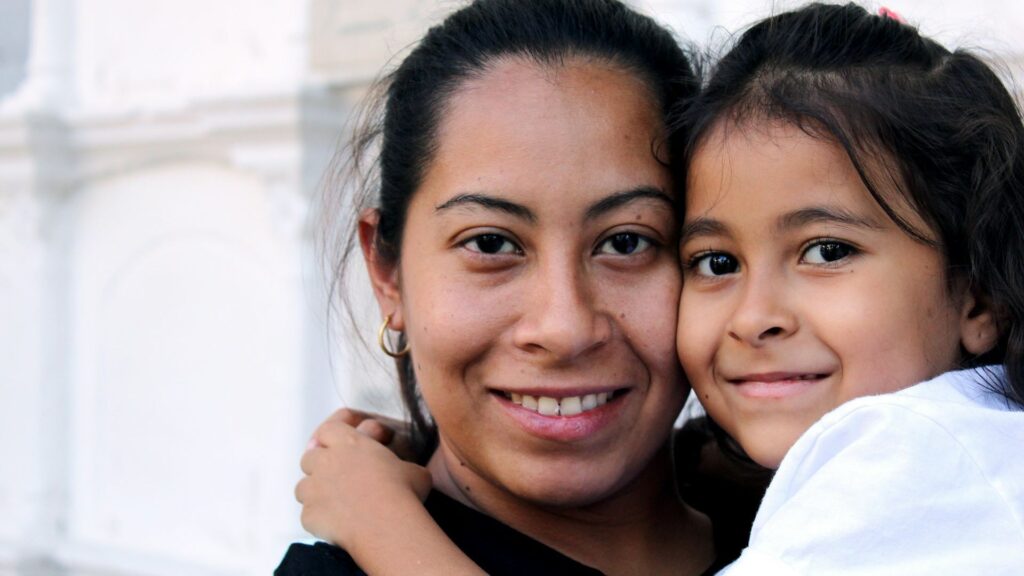Science
The Sun Faces Doom: Webb Telescope Captures a Haunting New Image
05 January 2026

Feminism is often accused of being opposed to motherhood. Critics charge it with spawning phenomena such as antinatalism – a programmatic aversion to reproduction. However, a closer examination of how the most prominent second-wave feminists approached motherhood reveals that their stance was largely positive, albeit cognizant of the drawbacks of being a mother.
As I wrote in my other piece for Holistic News, I advocate views developed within second-wave feminism. Earlier concepts, classified as part of the first wave of this powerful movement, are also valuable to me but they addressed only fundamental issues – the first feminists demanded voting rights, property rights and access to higher education for women.
The second wave tackled various dimensions of women’s lives, including motherhood. Later waves – the third and fourth – I do not find inspiring, as they deal with issues too abstract and symbolic to positively impact women’s lives. The third and fourth waves of feminism even challenge the very concept of “woman”, arguing that being a woman is determined by identification rather than a reproductive role. Regarding motherhood itself, they support surrogacy, which leads to extreme alienation of mothers and commodification of their children.

The second wave of feminism began after World War II. What happened during the war? Women from all social classes entered the workforce to replace men called up for military service. After the war, capitalist countries decided to remove them from the labor market to make room for returning veterans. In socialist countries, women largely remained part of the workforce. They rarely held managerial positions and could not easily rebel against this – feminism was considered a “Western invention.”
However, they could work in all sectors of the economy and pursue education as long as they wanted in their chosen fields. The situation was different in France or the United States, where second-wave feminism began with women’s dissatisfaction at being pushed back into homes governed and maintained by men. These homes – understood both as a place of residence and a source of love and upbringing – were to be nurtured by women.
We recommend: Chinese People Used to Shun Their Daughters. Today, They Are Invaluable
Which approach was more beneficial for mothers? In my opinion, the first one, although it would be best to combine it with freedom of speech for women and opportunities for advancement identical to those of men. At that time, however, this was a distant future melody.
Fertility rates were high on both sides of the Iron Curtain during this period. This fact was neither unusual nor stemmed from adopted ideologies – more children are always born after wars than usual. Humanity thus fills the gap left by those killed during the conflict. This happens even though the loss of men is usually greater than the loss of women. However, it is women and their procreative decisions that are more important for the survival of human societies (which is why we calculate fertility as the average number of children per woman of reproductive age, not per adult man).
Western second-wave feminism thus put forward the now obvious postulate to finally start appreciating mothers, instead of attributing their achievements to the men they were associated with.
Reflection on motherhood was extensive in second-wave feminism and often became a source of disputes. Three years after the war, Simone de Beauvoir wrote The Second Sex, in which she speaks about motherhood with great distance. This was caused by women being pushed out of the labor market and entrusted to the power of husbands. Absolute power – laws punishing domestic violence appeared in France only in the 1960s, and it was then that the principle requiring a husband’s consent for a woman to work was abandoned.
Children meant greater dependence on a man and his will. Beauvoir thus called for deeply considering the decision about motherhood, as it could prove to be the end of a woman’s freedom. The philosopher was strongly criticized for this attitude. Once, during a radio conversation, a man asked her why she was talking about motherhood when she had not given birth to a child. Her response became historic: “And have you given birth?”
We recommend: Family Roots: A Wellspring of Self-Assurance
In the United States, too, women were pushed out of the labor market after the war. The economic boom of the late 1950s and early 1960s saw middle-class men competing for high salaries. Their wives were expected to care for children and maintain homes while becoming ideal consumers rather than workers. A domesticated image of femininity was promoted: an alluring housewife in full makeup and an elegant dress, ecstatically using the latest vacuum cleaner model.
Betty Friedan termed this the “feminine mystique” and in her 1963 book of the same title, described how the proliferation of this vision truly affected its recipients. Studying non-working middle-class wives, she discovered that beneath the facade of happiness lay “the problem that has no name.” It consisted of a lack of space to pursue one’s plans and interests, or even to think about them contrary to the official narrative of fulfilled femininity that needed nothing more than a husband, children, and a beautifully maintained home.
Friedan did not deny that these were real values and sources of happiness but pointed out that the full realization of this model meant rejecting female autonomy and potentially entirely different goals.
Wives from affluent American suburbs did not need to be educated. Women went to college but did not finish. The dominant narrative treated their studies solely as an opportunity to meet a future husband. It was emphasized that the first child should be born early. Thus, any academic or professional ambitions of women had to fall victim. Friedan lamented that while in the socialist world there were female professors and doctors, in the United States a woman could at best be a “professor’s wife” or a “doctor’s wife” – the spouse of a man fulfilling himself in a given field. The situation with politics was similar.
American women had voting rights, but it was assumed that the social world external to the home should not interest them. As Friedan describes, mothers and wives realizing this model exhibited symptoms of frustration, the suppression of which led them to neurosis.

The Feminine Mystique became a bestseller, allowing this situation to change tangibly. Second-wave feminism was born in the United States. It was a movement positively disposed towards motherhood but reconciling it with women’s autonomy. The book also faced criticism. It was accused of not addressing lower-class, generally non-white women who did not give up low-paid work to take care of children because neither they nor their husbands could afford it.
This shows a certain superiority of the socialist advancement of women through education and professional work. It was particularly striking among women from working-class and peasant backgrounds who were the first in their families to complete higher education. As we know from family stories, this was achieved without the division into middle-class women weary of prosperity and proletarian women envying the luxury of staying at home. As I have already noted, a clear shortcoming of this policy was that it did not allow feminist reflection to be born.
Adrienne Rich’s Of Woman Born (1977), a seminal second-wave feminist text, merits particular attention. Rich analyzes motherhood as a profound experience exclusive to women, but also as an oppressive, male-imposed institution that alienates women from this experience. She chronicles the treatment of mothers across cultures and social classes, highlighting how their efforts for children were almost always attributed to or appropriated by men. Rich calls for change, advocating for recognition of mothers’ creative work in childbirth and child-rearing.
This is best achieved, she argues, when women have autonomy in deciding whether, with whom, and how often to become pregnant. In essence, she marries pro-women and pro-motherhood stances. Inspired by Rich, Sara Ruddick’s less-known but valuable 1989 publication, Maternal Thinking: Toward a Politics of Peace, posits that the maternal experience equips one with a mode of thinking that should underpin approaches to issues like international politics.
This theme echoed earlier feminist thought, such as that of utopian socialist Flora Tristan (1803–1844), who believed that women’s learning during pregnancy and childcare could later support building a just society. Given today’s welfare states where people indeed live better, this vision proved, so to speak, fertile and worthy of continuation.
We recommend: Being Honorable: Does It Even Mean Anything Today?
To avoid an overly saccharine portrayal – which, rightly or wrongly, is often associated with motherhood’s influence on women – it is worth noting a second-wave concept deeply averse to motherhood. Shulamith Firestone’s The Dialectic of Sex (1970) argued that the female sex would remain exploited by and subservient to men as long as women bore the burden of childbirth.
Firestone saw no positives in the maternal experience, let alone any female advantage over men, as demographics might suggest. Her solution was a post-gender utopia where pregnancy occurred outside the human body and people could define their identity and orientation independently of sexual reproduction. In a sense, this vision too was prophetic, though it gained negative connotations. Surrogacy represents a deliberate separation of motherhood from pregnancy, enabling child-bearing for those who could not otherwise procreate. However, Firestone was an outlier among second-wave feminists, who largely appreciated motherhood’s importance and demanded respect for it.
Motherhood occurs within specific historical, economic, and social conditions. These have made the maternal role challenging for women throughout most of human history, often entailing subordination to men. Simultaneously, mothers possess a unique perspective that recognizes the undervalued yet truly important, even crucial, aspects of human existence. How, then, can we improve mothers’ situations while increasing their thought patterns’ influence on social life? This cannot be achieved without understanding second-wave feminist concepts.
They teach us to view the world from a deeply human, humanistic perspective – for the perspective of women, including mothers, is one of direct care for another human being.
Translation: Klaudia Tarasiewicz
Polish version: Czy feminizm jest przeciwko macierzyństwu? Obalanie mitów


Truth & Goodness
04 January 2026

Zmień tryb na ciemny